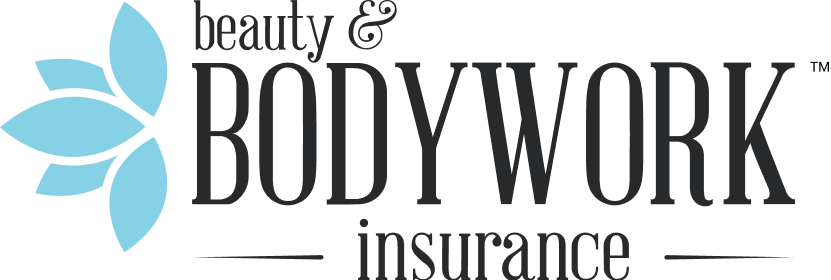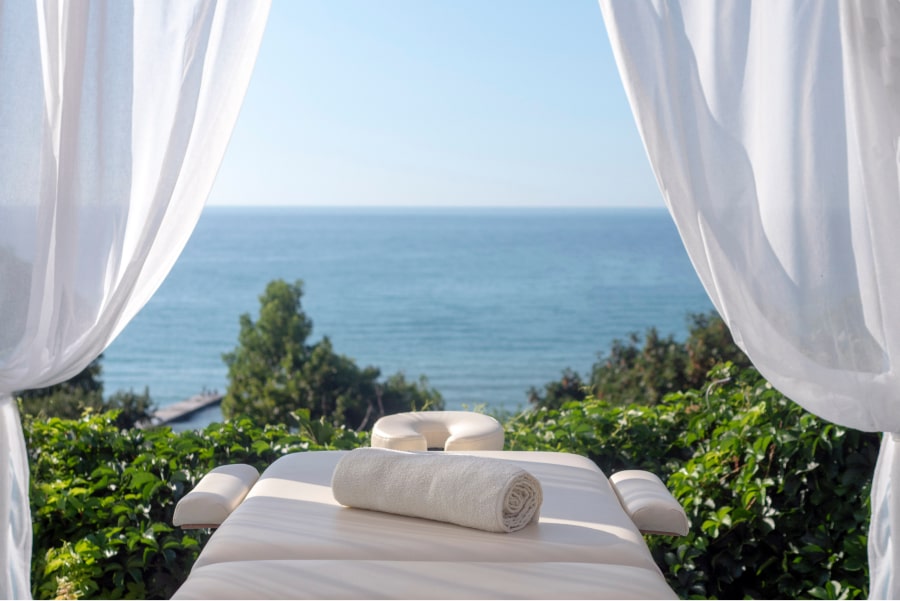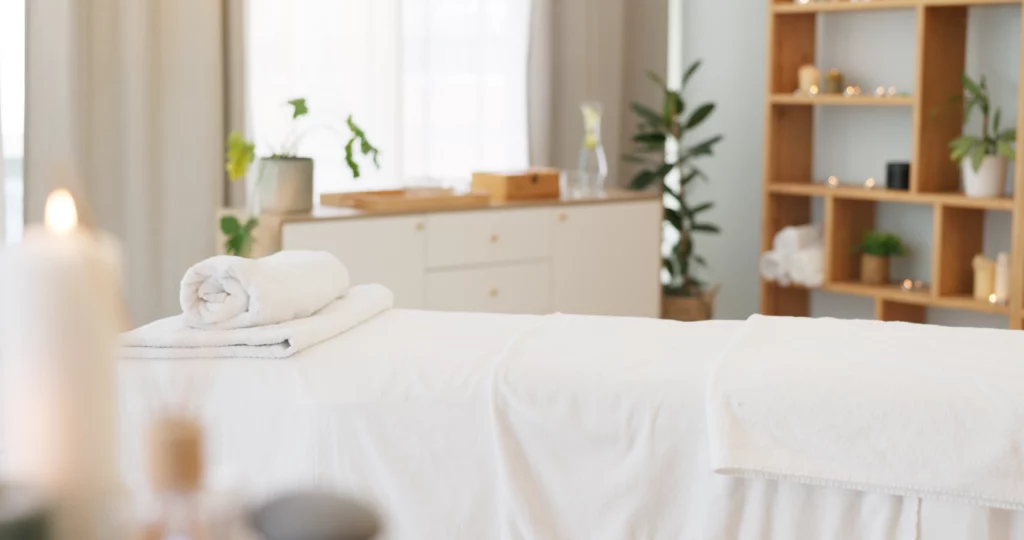You don’t have to be an influencer to make social media work for you, but an active online presence can boost your business. In fact, 62% of beauty and bodywork clients surveyed by BBI say a provider’s social media presence influences their decision to book. Let’s dive into tips and strategies for using social media to boost your massage therapy business today.
Why Should I Use Social Media for My Massage Therapy Business?
Don’t worry — there’s no need to take up “content creator” as a second career! Using social media to promote your massage therapy business expands your reach and helps you build connections. The goal is to find the right people, not all the people.
An active social media presence helps you:
- Build client trust with reviews, recommendations, and other social proof
- Cultivate connections with your community (aka networking!)
- Demonstrate your knowledge and qualifications
- Boost your credibility as a real business
- Stay connected with current clients
- Drive traffic to your website
Your business’ social media efforts create awareness of your massage therapy services, and more awareness means more exposure to potential future clients.
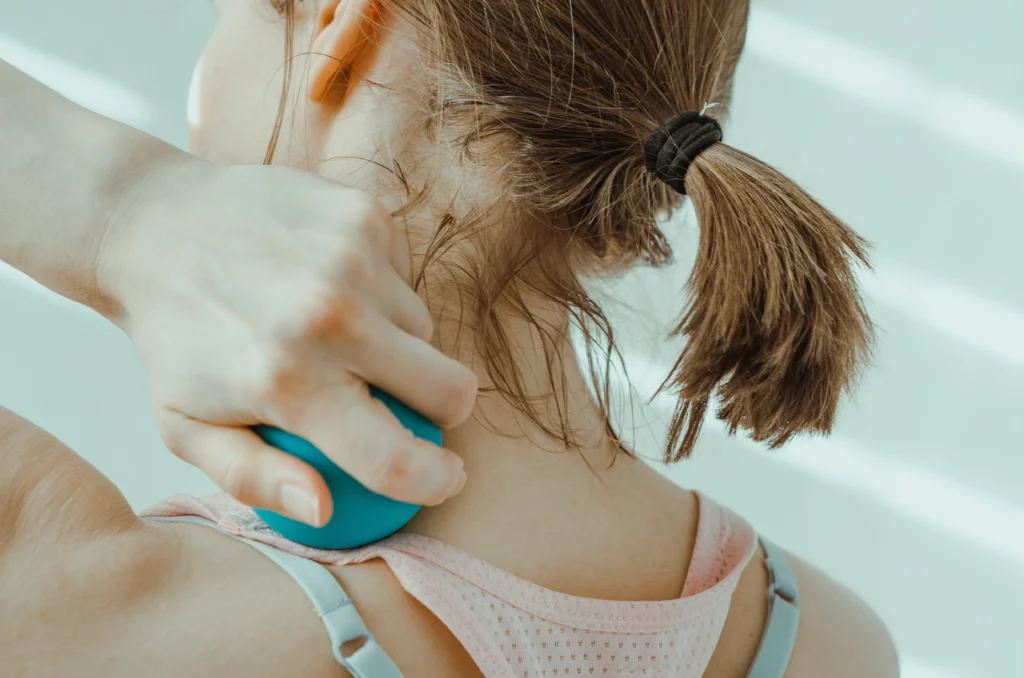
What Are the Best Social Media Platforms for Massage Therapists?
The most popular social media apps for massage therapists are Instagram, Facebook, and TikTok. But you don’t need to create a new business profile on each one right now.
As the saying goes, work smarter, not harder. Start with one platform first instead of trying to do everything all at once. Some social media apps already have cross-platform sharing options built in, such as cross-posting on Facebook with Instagram posts.
Choose a platform that fits you first. That could be one you already know how to use or one you simply like more. While they all do similar things, each app is slightly better tailored for a specific type of content.
- TikTok: Good for sharing quick tips, basic wellness info, and other short videos
- Instagram: Great for visual storytelling (static images or videos), branding, and website links
- Facebook: Excellent for connecting with the local community and sharing events
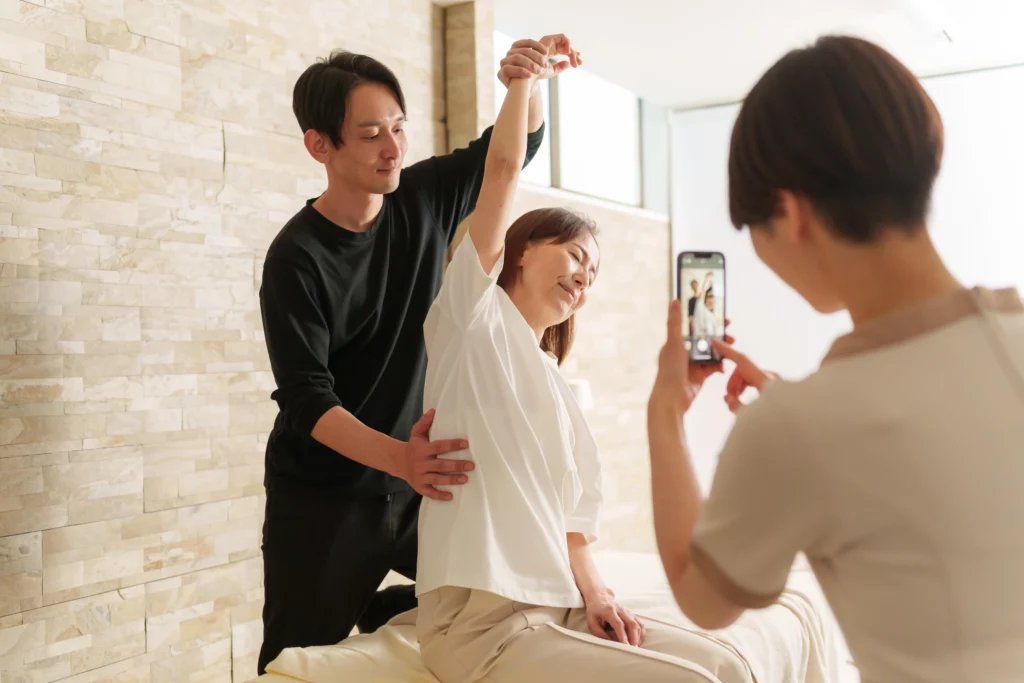
Massage Therapy Social Media Tips
Your massage business social media strategy should be part of your overall massage marketing strategy. Here are some tips for integrating the three biggest social media platforms into your marketing plan.
TikTok Tips for Massage Therapists
- Share informational micro-content, like 15 to 30-second clips of stretches to do at your desk to ease neck pain
- Create a recurring series, like “Muscle Myth Mondays” or “60-Second Flexibility Tips”
- Add geo-tags and captions with your city, like “This Tacoma massage therapist shares…”
- Share behind-the-scenes sneak peeks, like your massage room prep process or stories about your professional journey
- Pair trending audio with a wellness tip or special promotion announcement
Instagram Tips for Massage Therapists
- Use consistent colors, fonts, and imagery to establish or reinforce your brand identity
- Use stories to build ongoing visibility, including interactive components like polls or Q&As
- Share reels to improve reach, like a video demonstrating posture exercises or quick stiffness relief tips
- Instead of a long caption, break tips into swipeable static images — also called an image carousel — like “The Top 5 Jobs That Need a Massage This Week”
- Share (with permission!) client testimonials, reviews, photos, or thank-you posts
- Mix local hashtags with broader, industry-based ones, like #AustinMassage and #StressRelief
- Direct online traffic to your website or booking app using the linktree feature in your bio
Facebook Tips for Massage Therapists
- Encourage clients to leave reviews
- Join and participate in local community wellness or neighborhood groups
- Create Facebook events for things like chair massage pop-ups, stress relief workshops, or other events you host
- Set up an auto-reply in Messenger to minimize the risk of missing a potential client if they DM your Facebook page — Example: Thanks for reaching out! Here’s my online booking link
General Social Media Tips for Massage Therapists
- Repurpose content: TikTok videos can be used as Instagram Reels, and then shared to Facebook
- Use design tools: Apps like Canva have convenient templates to help you create content and images quickly
- Use other online marketing tools: Apps like Hootsuite or Metricool help you schedule posts and monitor the activity across all your social media channels
- Be consistent: Build a regular, attainable posting schedule. You don’t need to start with 14, seven, or even five posts a week — start at one or two and go from there
- Batch content: Create multiple pieces of content at once to make it easier to post on a consistent schedule
- Engage with your audience: Reply to questions and create interactive content
- Get a marketing planner: Save yourself time and stress by making a social media content plan ahead of time — get a free marketing planner from BBI!

What Content Should Massage Therapists Post on Social Media?
Focus on posting content that interests your ideal clientele. Remember: you don’t have to go viral to be successful! Hone in on the aspects of massage therapy you are an expert in to establish yourself as the “go-to” resource for your specialty.
Examples of topics and content to share:
- Stretches people can do at home or at a desk to address a specific area of stiffness
- Explanations or demos of specific techniques, like Swedish versus Thai massage
- Explainers about the benefits of stones, cupping, or aromatherapy
- Do’s and Don’ts for new clients getting their first massage
- Real client success stories and testimonials
- Tips for relaxation and stress relief
- Seasonal or social media-only promotions
To optimize your online presence, track the content that gets the most traffic. Keep your posting schedule consistent to minimize the effect of day or time of day on your traffic. After a while, you’ll start noticing patterns. Identifying patterns helps you further pinpoint the kinds of content you should focus on.
Protect Your Business and Online Presence With Massage Therapist Liability Insurance
Whether online or in your office, there’s always a risk of something going wrong. A client could hurt themselves trying one of the stretches you suggested in a video, or have an allergic reaction to an oil you used in person.
At BBI, we exist to ensure you’re prepared in case of accidents or miscommunications. Massage therapist liability insurance protects you from the financial costs of claims and lawsuits stemming from your business.
For as little as $9.99/month, enjoy peace of mind with protection from claims of injury, false advertising, and more with Beauty and Bodywork Insurance. BBI also offers optional cyber liability insurance in case you do bookings online or store client data digitally.
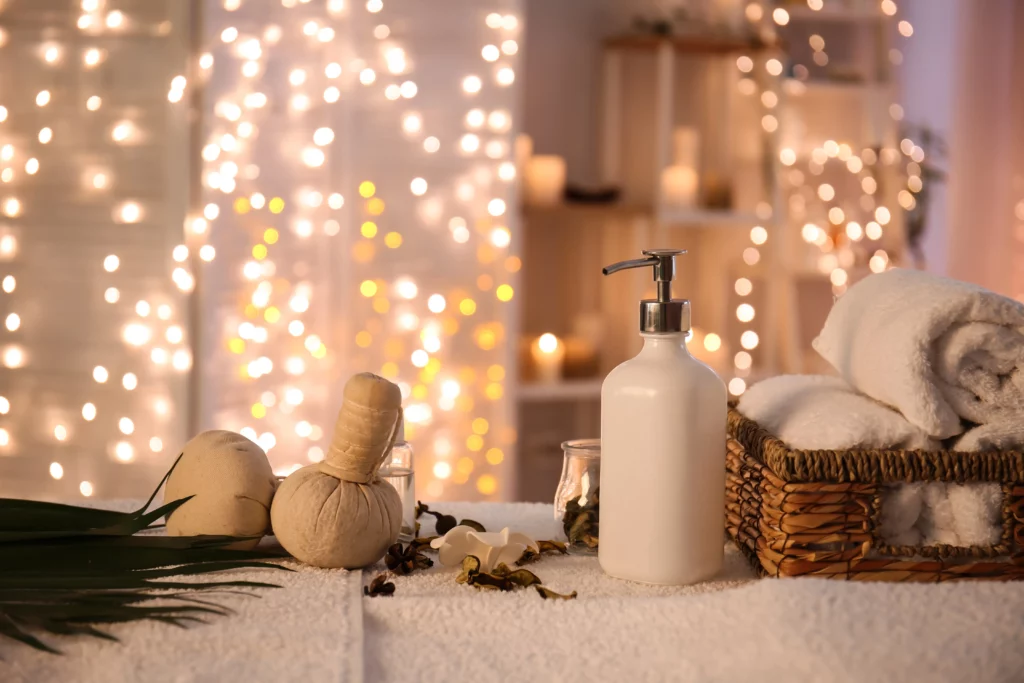
Common Questions About Social Media for Massage Therapists
Should I Pay for Social Media Ads as a Massage Therapist?
You can, but you don’t need to. Start with what you can do for free — posting consistently, using local tags, gathering client reviews, and build from there. You may find your schedule full enough without paying for social media ads.
How Often Should I Post on Social Media to Attract More Clients?
Focus on quality and consistency over quantity. Start small, with one or two posts per week, and go from there. Focus on building connections with useful or local content.
Authenticity helps you stand out from the rapidly growing amount of purely AI (artificial intelligence) generated content.
Is Social Media Worth It for Massage Therapists?
Yes! An authentic, up-to-date social media presence builds trust. It also helps turn potential clients into paying clients by reminding them of the benefits of massage, and how your services are part of a healthy self-care routine.
Even small efforts lead to meaningful, long-term growth. For example, one post could catch the attention of one overworked mom, who shares it with her friend group, whose members start to book with you, turning one one-time client into three regular clients.
